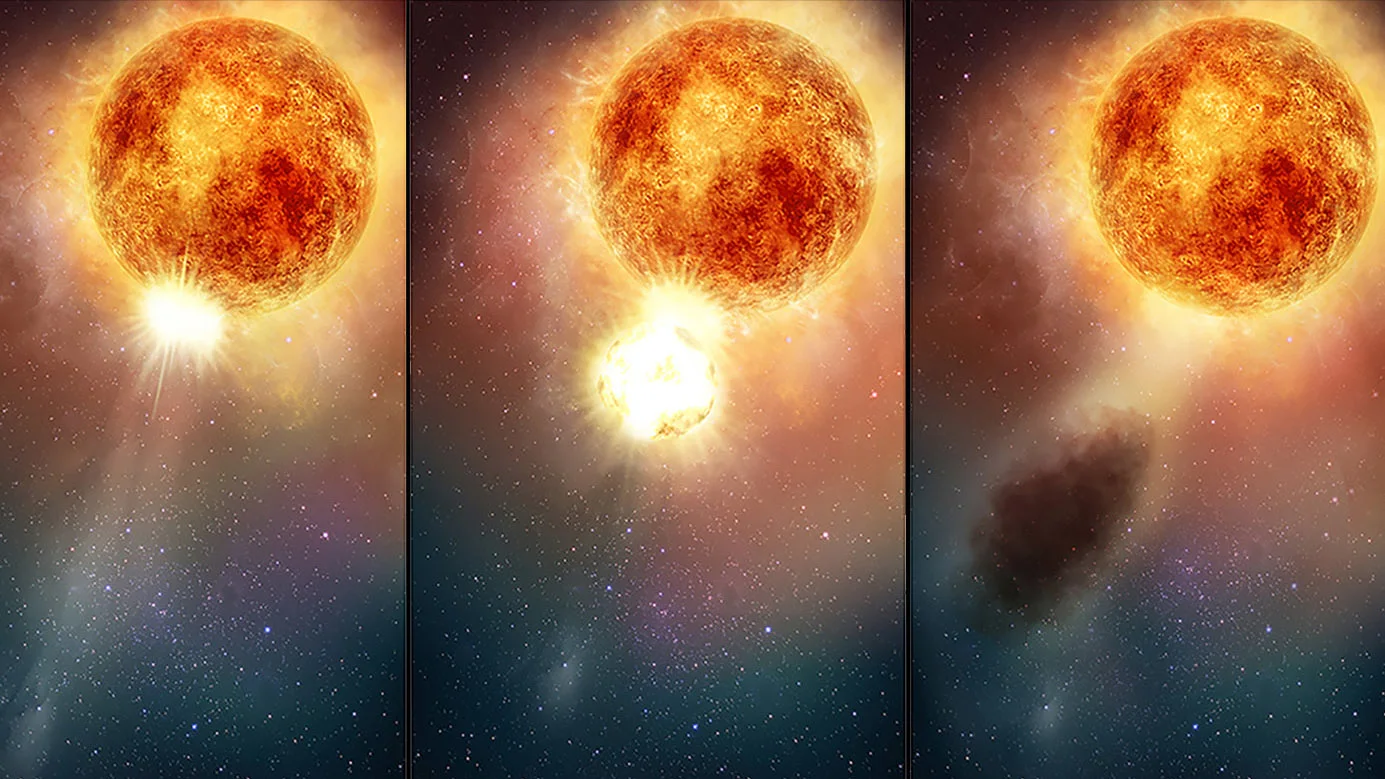
Betelgeuse dimming blamed on ‘stellar sneeze’, and it's dimming again!
This aging red supergiant star just isn't following 'the rules'
Betelgeuse started off 2020 by presenting astronomers and stargazers with a strange mystery. The bright star, normally a prominent fixture in the night sky, dimmed for some unknown reason. Now, astronomers believe it was caused by the aftermath of what they called a 'stellar sneeze'.
The star Betelgeuse, which occupies the right shoulder of the constellation Orion, is a red supergiant, around a thousand times larger than the Sun. Because it is very near the end of its lifespan, Betelgeuse's unstable surface expands and contracts, which results in a fairly regular pattern of brightening and dimming over a period of 420 days.
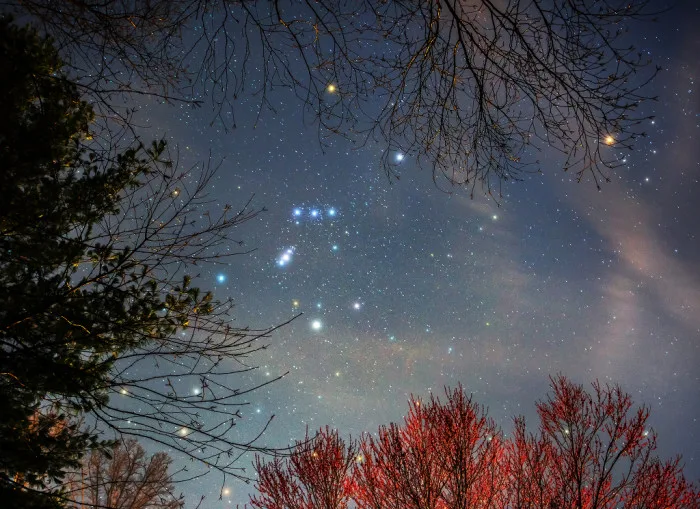
Betelgeuse occupies the right shoulder of the constellation Orion. Credit: NASA
The dimming that started towards the end of 2019, though, was very unusual. Normally, the average stargazer wouldn't notice Betelgeuse's brightening and dimming. By February 2020, though, everyone saw it! The star had lost about two-thirds of its brightness.
"Betelgeuse is a bright star in our galaxy, near the end of its life that is likely to become a supernova. When the star became very faint in February 2020, this was the faintest that it had ever been since measurements began over 150 years ago," Andrea Dupree, the associate director of the Harvard-Smithsonian Center for Astrophysics, said in a press release. "The dimming was obvious to everyone when looking at the constellation Orion; it was very weird, Betelgeuse was almost missing."
Telescopes aimed at the star captured the dimming, which appeared to be affecting its lower half.
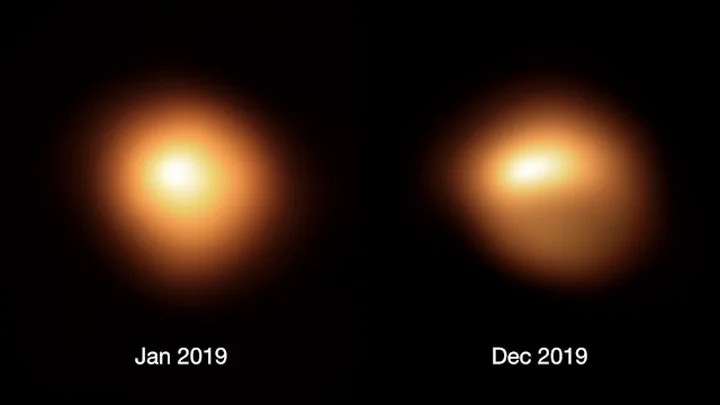
Two views from the ESO's Very Large Telescope, nearly a year apart, capture the dimming of Betelgeuse. Credit: ESO/M. Montargès et al.
Still, the mystery persisted. Was this a dark starspot covering an immense span of the Betelgeuse's surface, or something blocking our view of the star, or was the star in the initial stages of a supernova? No one could tell.
According to a new study, published this week in The Astrophysical Journal, it was observations from the Hubble Space Telescope, captured in 2019 before the dimming, that offered up the strongest clues as to what was going on.
"With Hubble, we had previously observed hot convection cells on the surface of Betelgeuse, and in the fall of 2019 we discovered a large amount of dense hot gas moving outwards through Betelgeuse's extended atmosphere. We think this gas cooled down millions of miles outside the star to form the dust that blocked the southern part of the star imaged in January and February," Dupree, the lead author of the study, said. "The material was two to four times more luminous than the star's normal brightness. And then, about a month later the south part of Betelgeuse dimmed conspicuously as the star grew fainter. We think it possible that a dark cloud resulted from the outflow that Hubble detected. Only Hubble gives us this evidence that led up to the dimming."
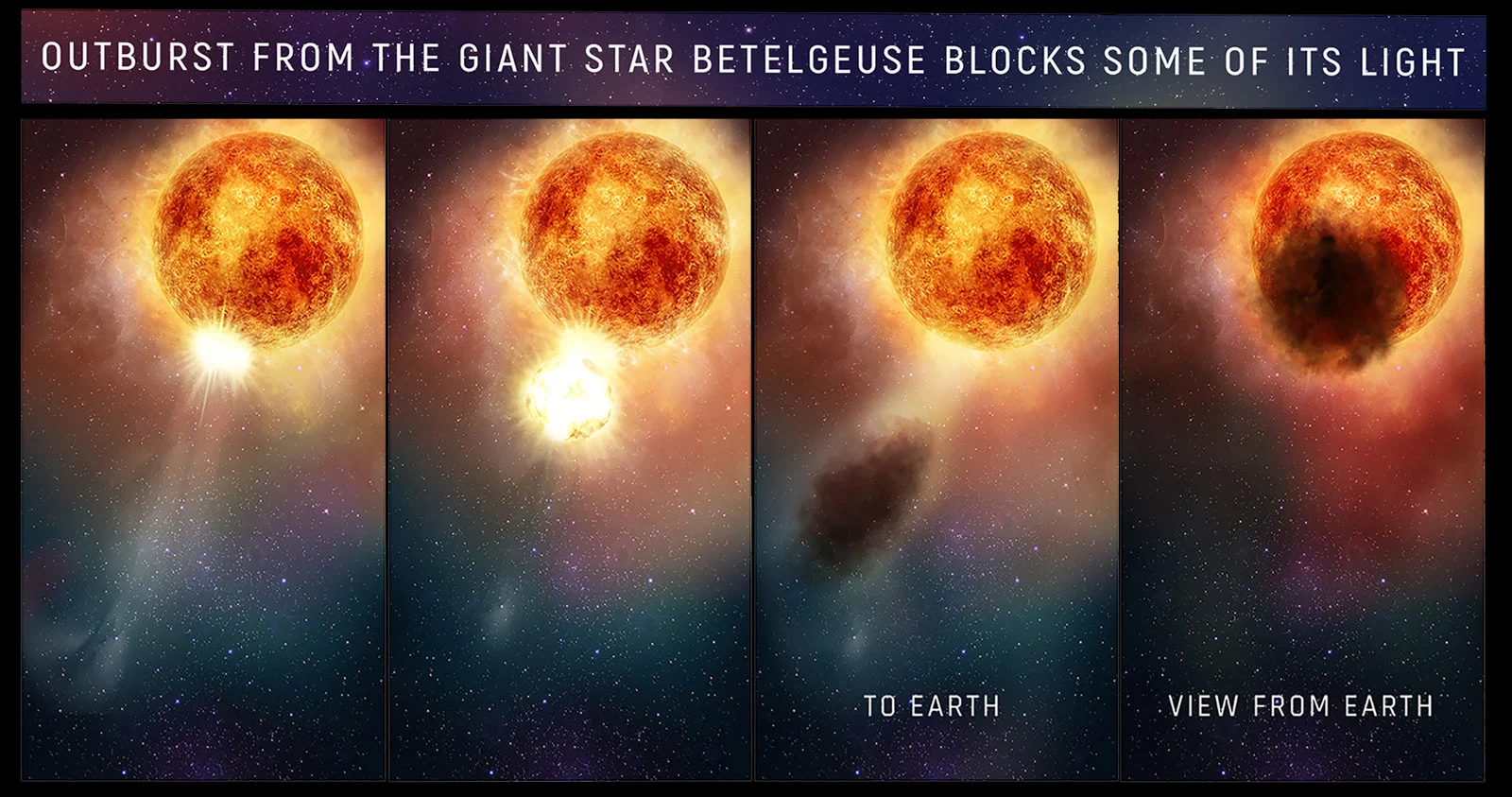
The first three panels of this illustration show this 'stellar sneeze' from the side, with the direction of Earth located off the bottom left corner of the panels. The final panel reorients the previous view to show the dust cloud as it would have appeared from Earth. Credit: NASA, ESA, and E. Wheatley (STScI)
BREAKING THE MODELS
It is not easy to study the inner workings of a star, or how a dying star behaves. To do so, astronomers build models, based on their observations and what the physics says to explain those observations. These models then serve to predict what future observations should look like.
According to Dupree and her team, Betelgeuse is turning out to be something of a model-breaker. Predictions show that plasma eruptions from an aged star should come from its poles. However, their observations with Hubble clearly showed that this particular red supergiant isn't following those 'rules'.
"All stars are losing material to the interstellar medium, and we don't know how this material is lost," Dupree said. "Is it a smooth wind blowing all the time? Or does it come in fits and starts? Perhaps with an event such as we discovered on Betelgeuse? We know that other hotter luminous stars lose material, and it quickly turns to dust, making the star appear much fainter. But in over a century-and-a-half, this has not happened to Betelgeuse. It's very unique."
Watch below: The Unprecedented Dimming of Betelgeuse - ESOCast
ANOTHER 'SNEEZE'?
We can't see the constellation Orion at the present time. It is currently too close to the Sun in our sky, and thus Betelgeuse is only 'visible' during the daytime. So, at the moment, it's not safe for most telescopes, including Hubble, to safely gather more observations.
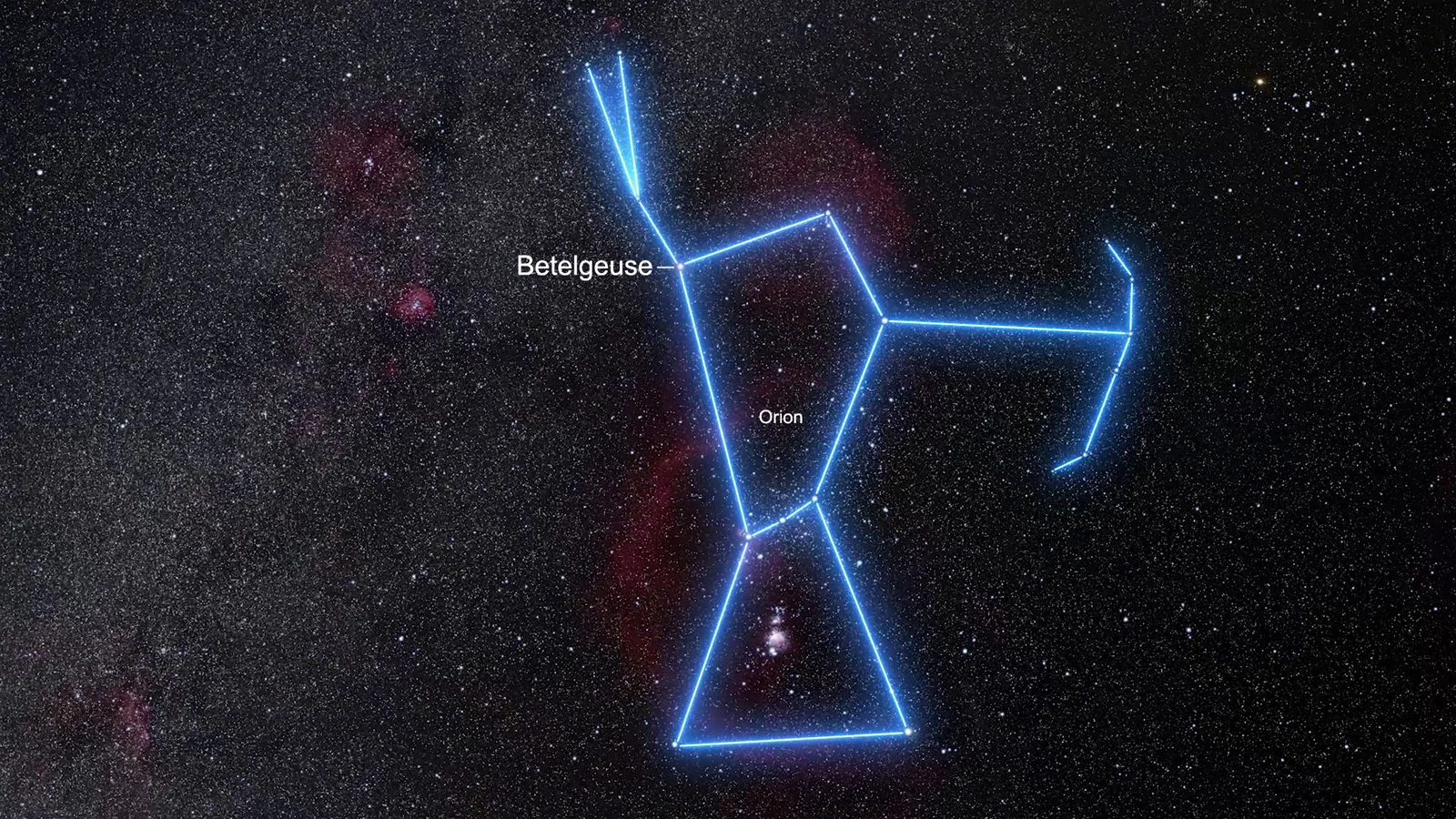
Betelgeuse forms the right shoulder of the constellation Orion. Credit: ESO/P. Kervella/M. Montargès et al., Digitized Sky Survey 2. Acknowledgement: Eric Pantin, N. Risinger
One telescope, though, NASA's Solar and Terrestrial Relations Observatory (STEREO), is in orbit around the Sun, lagging behind Earth in its orbit by a couple of months. This puts STEREO in a perfect position, with the ideal set of instruments, to keep tabs on Betelgeuse.
Based on STEREO's observations, taken over five days between late June and early August, the star may have gone through another of these 'stellar sneezes'.
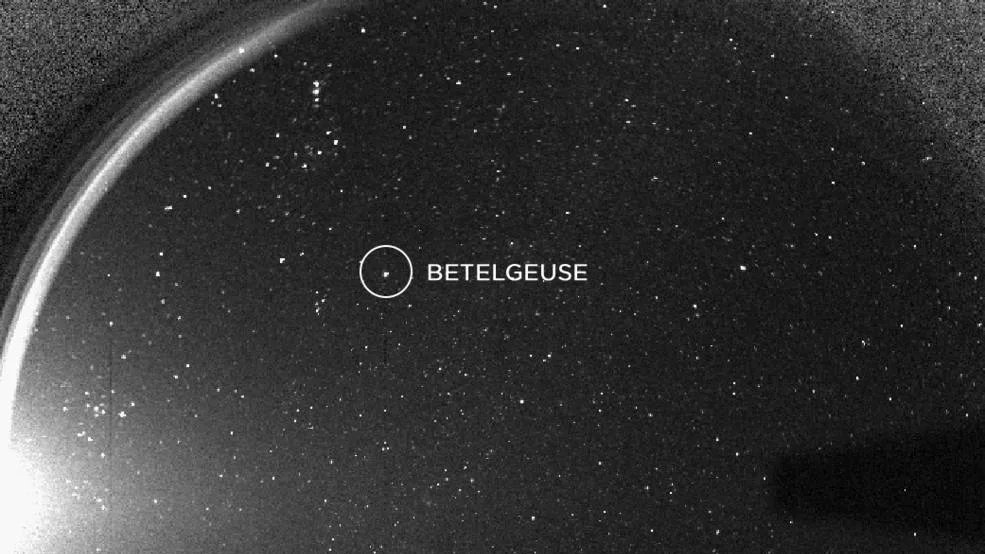
The view of Betelgeuse from STEREO's Heliospheric Imager, in northern Summer 2020. The Sun is located off the left-hand side of the image. Credit: NASA/STEREO/HI
"Our observations of Betelgeuse with STEREO confirm that the star is dimming again. Betelgeuse typically goes through brightness cycles lasting around 420 days, and since the previous minimum happened in February 2020, this new dimming is over a year early," said Dupree.
Betelgeuse is only now becoming visible in the night sky again, just before sunrise, and Orion will rise earlier and earlier for the rest of the year. So, keep an eye on the constellation's right shoulder, to see if you notice Betelgeuse dimming again.
